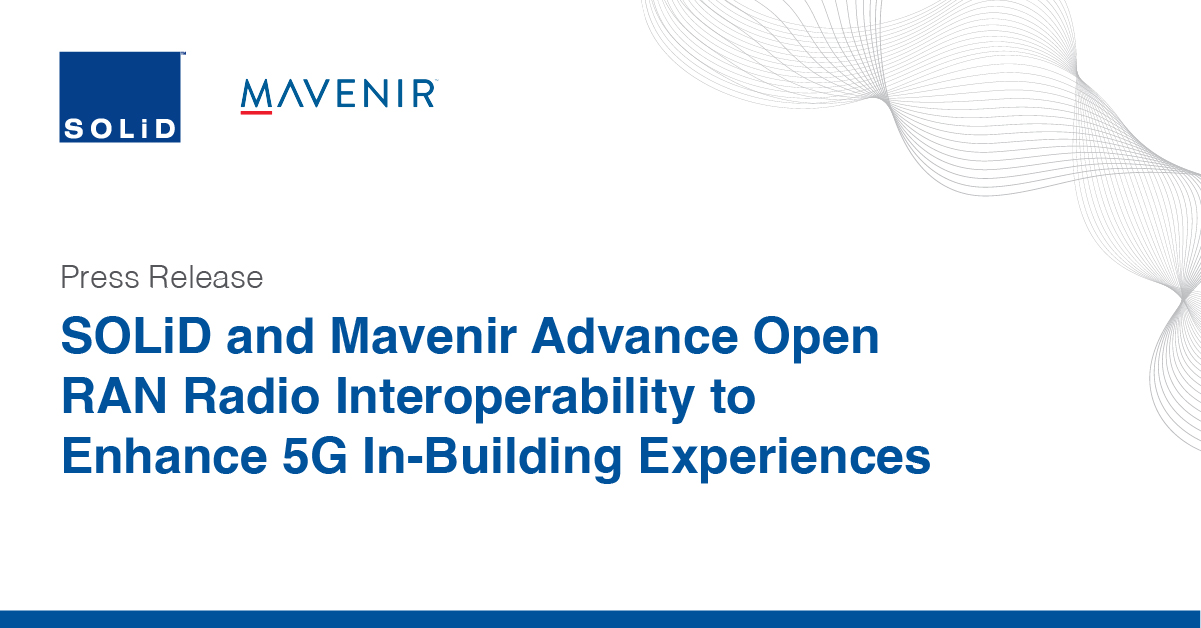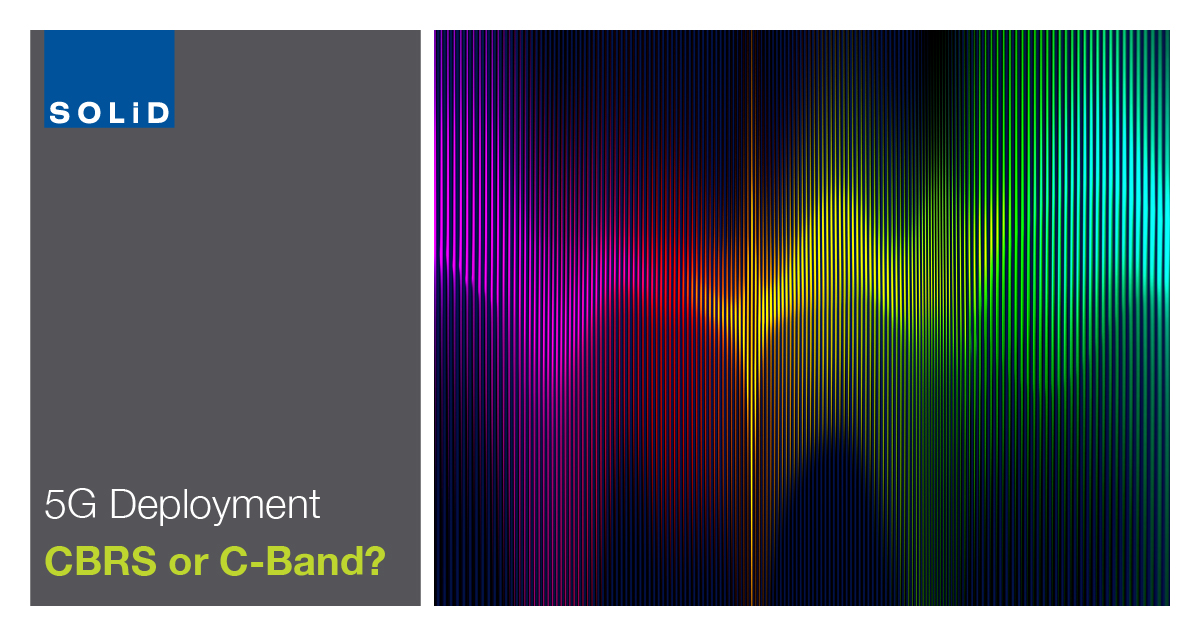How Mobile Network Connectivity Increases CRE Valuations

Whether your building tenants are coffee shops and condos, or enterprise offices and event spaces, in-building connectivity is essential to attracting and retaining commercial real estate (CRE) tenants in today’s hyper-connected world. In fact, tenants rate communication as the top priority in a workspace, and are often likely to pay more in rent if it means access to better in-building connectivity.
This need is only intensifying as demand rises for in-building 5G service that delivers higher performance, lower latency, and greater bandwidth. Yet, more than 60 percent of CRE owners and building managers report that their current in-building wireless networks cannot keep up with the rate of enterprise digital transformation.
Moreover, real estate investment experts predict that at least 10 percent of the office real estate stock will require an upgrade or redesign this year. That means that landlords will need to do a better job of delivering the connectivity that tenants demand in the remaining office, retail, and event spaces.
Building CRE Value
Legacy cellular service is typically unreliable inside most modern buildings. Network congestion, energy-efficient LEED building materials, and nearby obstructions that block signals all contribute to spotty in-building coverage and dropped calls. As a result, nearly three quarters of office workers report a poor connectivity experience.
With growing adoption of 5G technology, next-generation networks are now using new radio frequencies that are even less capable of penetrating buildings, compounding the problem. This issue is particularly challenging for Millennials — the first digital-native generation that now makes up more of the workforce than any other generation. Mobile technology devices such as smartphones, tablets, and laptops have revolutionized the way that Millennials connect and interact, with nearly half saying they “couldn’t live without” their smartphone.
One of the best ways to improve the tenant experience and increase the value of your property is to provide reliable cellular coverage. But in-building connectivity does more than satisfy the demands of tenants’ employees and customers. Investing in wireless communications equipment also provides a technology evolution path to create a more efficient, “smarter” building. For example, with the latest in-building Distributed Antenna System (DAS), savvy CRE managers can use 5G and the Internet of Things (IoT) to automatically control building systems such as security cameras, lighting, and “smart” thermostats.
Are You 5G Ready?
To ensure that your in-building DAS equipment is ready to fully support 5G, you may need to update or replace legacy systems that do not work with new radio frequency (RF) spectrum allocations, such as C-Band and other mid-band frequencies. The SOLiD ALLIANCE 5G DAS solution is modular and scalable for simple upgrades, and supports the 5G frequencies that the major mobile service providers use in their public networks. That means that the ALLIANCE is ready to deliver fast, seamless, high-performance coverage across the entirety of new 5G bands for enhanced, always-on mobile broadband.
The modular SOLiD ALLIANCE 5G DAS solution offers maximum design flexibility for easy upgrades and long-term value. Providing high-quality, in-building connectivity with the SOLiD ALLIANCE 5G DAS creates a positive tenant experience that makes it easier to lease office or retail space, keeps tenants satisfied and loyal, maintains higher occupancy rates, and increases leasing rates.
However, each indoor environment is different, so SOLiD’s Premier Partners engineer your solution to suit your building, providing optimal design and deployment, as well as peace-of-mind network maintenance, monitoring, and expert support to deliver an excellent tenant experience. And because the scalable SOLiD solution grows with you, you can maximize the value of your property at a lower cost per square foot than other technologies.
Amplify Return on Investment
The evolution to new 5G features and capabilities enables significant improvements in network service quality, resilience, and performance. With an investment in the ALLIANCE 5G DAS, CRE professionals can enjoy higher occupancy rates, premium prices, and increased profitability by providing multi-operator 5G service throughout any commercial building or event space.
To learn how to unleash the potential that 5G offers for in-building connectivity, contact SOLiD today or visit: https://solid.com/us/wp-content/uploads/sites/6/Increase-Commercial-Real-Estate-Value-with-SOLiD.pdf
SOLiD and Mavenir Advance Open RAN Radio Interoperability to Enhance 5G In-Building Experiences
Proven O-RAN interoperability speeds and simplifies end-to-end Open RAN network deployment
SOLiD, the leader in cellular in-building mobile coverage, and Mavenir, the network software provider building the future of networks, today announced global interoperability testing of Open RAN radios and distributed antenna system (DAS) in-building technology. Proven interoperability of Mavenir and SOLiD solutions offers a unique configuration of Open RAN technology merged with a neutral host DAS platform, helping network operators, neutral hosts, and system integrators to reduce space and power requirements for faster, simpler in-building coverage deployments.
The joint testing validated the interoperability of SOLiD's DAS RF interface unit and Mavenir's Open virtualized RAN (vRAN) Distributed Unit (DU) and Centralized Unit (CU) supporting O-RAN Split 7.2x. This interoperability testing was performed according to O-RAN ALLIANCE specifications using SOLiD's latest neutral host DAS solution, demonstrating end-to-end configuration with 5G user devices.
"Mavenir positions an Open RAN, cloud-native network approach to disrupt the status quo, allowing businesses and consumers alike to unlock the value of 5G," said Sachin Karkala, Sr. VP and GM for RAN at Mavenir. "By demonstrating the performance of our Open vRAN DU and CU radio interfaces working in concert with the SOLiD DAS platform, we are advancing the real-world application of O-RAN technology for improved speed, scalability, and agility."
"As a global leader in open, interoperable technology delivery, SOLiD is blazing the trail toward a robust Open RAN ecosystem that fosters end-to-end performance and value," said Dae-Young Kim, Ph.D., Executive Vice President, SOLiD. "The validation of SOLiD's neutral host DAS RF interface unit smoothly interoperating with Mavenir's O-RAN-compliant solution represents true openness, paving the way for improved end-to-end network solutions that deliver a truly seamless 5G experience everywhere."
How to Design a DAS for Seamless In-Building Mobile Service
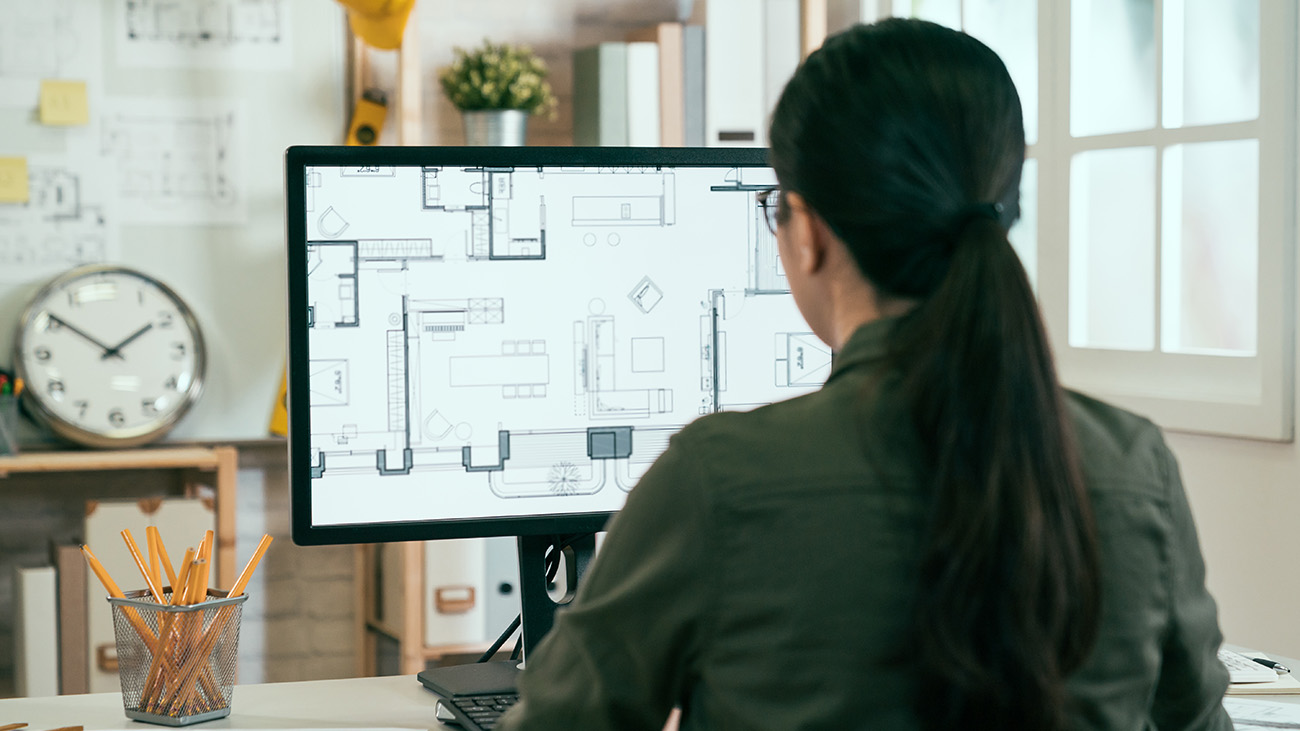
Have you ever walked into a building and immediately noticed your mobile signal plummet to a single bar, causing your important call to drop or your video stream to buffer endlessly? In today's hyper-connected world, a robust in-building mobile service isn't just a luxury—it's an expectation. This is where a Distributed Antenna System (DAS) comes into play, serving as the silent conductor of wireless signals, ensuring that connectivity follows you as seamlessly as your own shadow.
This blog post is your definitive guide to designing a DAS that guarantees seamless in-building mobile service, keeping you connected in a world that never stops moving.
A successful in-building DAS design follows three basic stages:
- Stage 1: Conceptual design
- Stage 2: Feasibility study
- Stage 3: Applied design
How to Design a Distributed Antenna System (DAS) |
||
|---|---|---|
| Stage 1: Conceptual design | Stage 2: Feasibility study | Stage 3: Applied design |
|
|
|
Let’s examine exactly what is involved in each of these steps.
Define the Concept
The primary goal of a conceptual DAS design is to outline a bill of materials (BOM) that can be used to evaluate the approximate cost of a distributed antenna system. At the basic level, a phase one design should include floorplans, compliance criteria, and some idea of the expected venue occupancy. This information allows you to accurately determine the frequency bands and coverage sectors to include in the design.
Each of these categories can be broken down into more granular elements, as follows.
Floorplans
Including the following items in your floorplan design can help achieve a successful DAS design as quickly as possible.
- The use of .DWG files allows for a more accurate and detailed representation of the building
- Identify the location of the main distribution frame (MDF), intermediate distribution frame (IDF) closets, and cable pathways
- Be sure to include any limitations of the physical installation, such as hard ceiling areas, open atriums, or public spaces where aesthetics prevent antenna placement.
Compliance Criteria
Two critical key performance indicators (KPIs) determine the success of any wireless technology installation. The first metric is signal strength, and the second is signal quality.
- Signal strength is typically designated as a coverage criteria of x coverage over n% of an area. A widely accepted minimum is -95dBm Reference Signal Received Power (RSRP) over 95% of the area, which represents a coverage value for both LTE and 5G new radio (NR) technologies.
- Signal quality is a key second measurement when evaluating the compliance of high-capacity venues with many coverage sectors. The signal-to-noise ratio is one of the critical quality metrics studied for both LTE and NR technologies. Minimum values on this metric vary across the different mobile network operators (MNOs); however, a typical value is a SNIR of 8 dB over 95% of the area.
Occupancy
Understanding the expected occupancy of a building or venue can guide an engineer to design a solution that supports the correct number of sectors and bands. A typical sector can support up to 800 simultaneous users. Given that the average user now carries at least two connected devices, this means that most environments require more than one cell sector to support the capacity of any given venue.
In most cases, the maximum occupancy, as dictated by fire codes, can be a good guideline for occupancy figures. However, additional information about where the bulk of the users are expected to be in space and time can provide useful context.
The resulting conceptual design should include the following:
- A three-dimensional model
- Active and passive bill of materials
- Initial electromagnetic energy (EME) compliance report.
Evaluate Feasibility
During the second stage, DAS engineers conduct a feasibility study to confirm assumptions in the conceptual design. This typically involves a site walk, wireless benchmarks, and more detailed conversations with the MNO. For those installations in unusual environments, this is the point where wireless calibration can occur. These calculations can improve accuracy and ensure the design represents an accurate representation of signal propagation.
A site walk is conducted in order to identify all the cable paths, along with the MDF and IDF rooms, space availability, environmental settings, and security needs. In addition, the site walk allows engineers to catalog any existing and reusable infrastructure, such as electrical outlets, available cable trays, and dark fiber. Pro Tip: engineers can perform stage two activities in parallel with the conceptual design phase for greater efficiency.
Detailed data collection can provide useful details to establish a wireless benchmark. This will enable a clear picture of which wireless service providers have signal levels penetrating the venue, and at what signal strength. Overcoming influences from the outside macro network can be a major contributor to increased costs when deploying DAS solutions.
Ideally, engineers will conduct a scanner walk to gain the most accurate information, ensuring the scanner antenna is clear of any bodily obstruction. Be sure to collect all channels across all commercially licensed spectrum to produce a .CSV file for easy integration into wireless design software. Supplementing this data with MNO conversations helps to clarify frequency bands, spatial streams, sector count, and any needed macro mitigation activities.
Current design software can represent many different environments with reasonable accuracy, but unique environments specific to your venue may require additional onsite engineering studies to achieve wireless calibration. These spaces might include tunnels, indoor/outdoor areas, and unique architectural elements. To accomplish this, continuous wave (CW) testing provides a method that determines how well a signal travels in a specific space and provides accurate information about signal losses through materials.
Confirm Design as Built
The last stage of a robust DAS design process is an ‘as-built’ design that takes place after the construction of the solution. This is where the hardware in the design is reconciled with the applied build, enabling confirmation that the active and passive equipment is accurate to the signal path. The infrastructure testing results also can augment the design plan to create a master reference document for benchmarking and replication.
During the applied design stage, DAS engineers can collect data through a post-deployment site walk and import it into the design. This allows the calibration of signal propagation predictions to better represent the DAS system’s performance.
Designing a DAS that is perfectly suited to your building, event venue, or campus helps ensure the availability of reliable, high-quality mobile service. Yet the actual design process requires time and attention to detail. An experienced design engineer familiar with the proper evaluation software who understands RF behavior can optimize design planning time to speed deployment without sacrificing results.
The SOLiD Engineering and Design service provides the resources needed to ensure accuracy in design for fast deployment in any venue. Equipped with the latest tools, software, and technology, experienced SOLiD experts can help reduce design cycles for a more efficient process leading to reduced implementation costs.
To get started with a robust system design that will deliver outstanding performance well into the future, submit your design requirements to our experienced SOLiD Engineering and Design services team today. To learn more, visit: www.solid.com/us/services/engineering-and-design.
Recommended products
SOLiD ALLIANCE 5G DAS
SOLiD ALLIANCE is the most flexible DAS platform available, featuring remote optical units with power classes from sub-1W to 2W, 5W, 20W, and 40W, all driven by the same headend over a single strand of fiber. Our modular amplifiers cover every band used for commercial cellular communications, private networks, two-way radio, paging, and public safety from 150 MHz to 4 GHz.
Learn More about ALLIANCE 5G DAS
Seeking Middle Ground for 5G Bandwidth
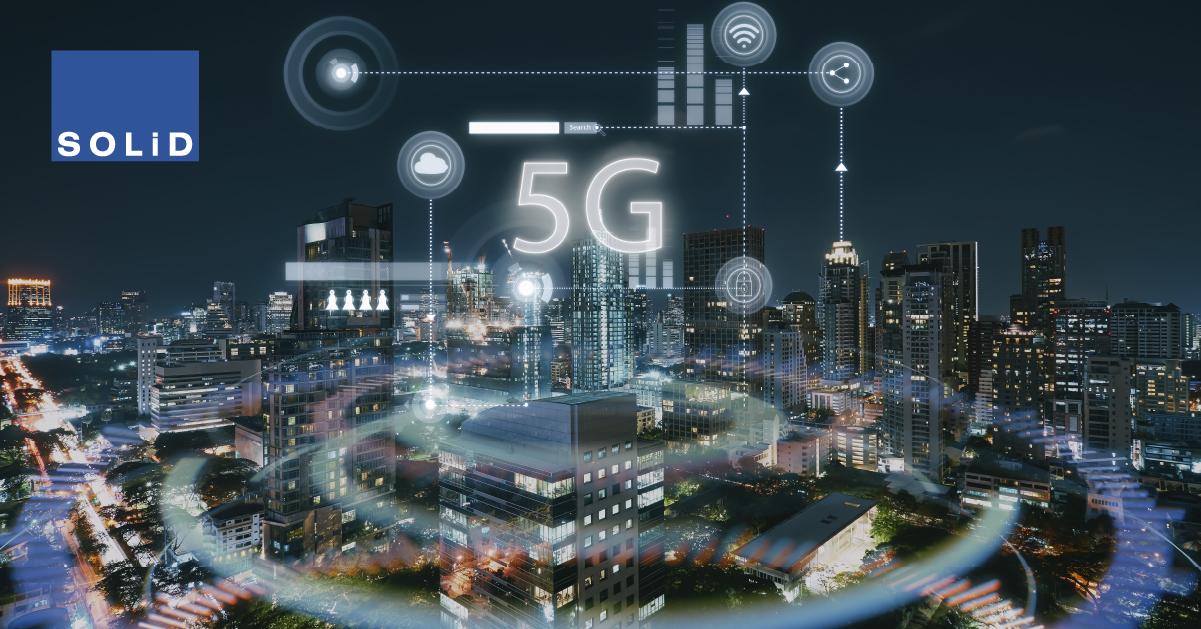
As the adoption of 5G continues to accelerate, the demand for mobile data capacity does not appear to be slowing down anytime soon. In an effort to keep up, the Federal Communications Commission (FCC) has continued to make new radio frequency (RF) spectrum available. Yet, the profusion of various spectrum bands licensed for 5G can be particularly complex, creating more confusion than clarity.
The bands that the FCC has made available for 5G most recently tend to be frequencies in the mid-band, including the C-Band, Auction 110, and the Citizens Broadband Radio Service (CBRS). Mid-band spectrum offers an optimal mix of speed, capacity, and coverage to enable improved 5G subscriber service. But not all mid-band spectrum is the same.
The C-Band
The FCC previously reserved the C-Band for satellite TV transmissions before advanced digital encoding methods enabled satellite companies to "repack" their broadcasts into the upper portion of the band. In 2020, the FCC auctioned off 280 MHz of the lower portion of the C-Band spectrum between 3.7 - 3.98 GHz for 5G networks. Finalizing the release of the C-Band spectrum took several years to resolve, including intense negotiations with the Federal Aviation Administration (FAA) over concerns about interference with airplane radar altimeters.
Once the Tier 1 mobile network operators (MNOs) could switch on 5G networks in the C-Band, they quickly began transforming subscribers' 5G experience with increased bandwidth and faster speeds. That's because the C-Band contains enough spectrum to support larger 5G channels (up to 5x larger than typical 4G channels). At the same time, the frequency is still low enough for good signal propagation — as opposed to higher frequencies, such as the mmWave bands, that have very short transmission distances.
Auction 110
The Auction 110 band, also known as either Andromeda or Lower n77, occupies the mid-band RF spectrum between 3.45 - 3.55 GHz. The two largest Auction 110 license holders are AT&T and DISH Network, followed by T-Mobile, US Cellular, and several private equity companies. Like C-Band, the MNOs plan to deploy the Auction 110 spectrum rapidly. Because of the proximity of these two bands, similar infrastructure, including antennas and radios, may support both bands and enable MNOs to combine deployment efforts to reduce costs. Some MNOs delayed some of their C-Band deployments waiting for the new spectrum to become available. FCC rules for the Auction 110 spectrum limited ownership to 40 MHz. While these spectrum segments do not support the largest 5G channels alone, they may be aggregated with spectrum in other bands to produce similarly improved performance.
 CBRS Band
CBRS Band
Three tiers of users share the CBRS spectrum, which occupies 150 MHz between 3.55 - 3.7 GHz, and each tier has a different level of priority. The first tier consists of incumbent users using the CBRS band for mission-critical situations, such as the US military and satellite ground stations. Next are the priority access license (PAL) holders, including telecom carriers, internet service providers, and large enterprises who received licenses in the 2020 auction. Each license provides 10 MHz, and each PAL licensee could obtain up to four licenses in an area.
The remaining tier of CBRS users have access to general authorized access (GAA) channels. These channels are essentially the same as the unlicensed Wi-Fi spectrum, which anyone can use freely as long as they do not interfere with traffic on the first two tiers. While the CBRS license size limits the usefulness of the spectrum for 5G service, which requires larger channels for spectral efficiency, it still plays an important role in building private networks for industrial and enterprise applications. In addition, MNOs may aggregate channels deployed in the CBRS band with channels in other bands to augment network capacity.
Finding Middle Ground
For today's MNO making huge investments in 5G, spectrum is precious, and more spectrum is better. With broad, dedicated channels and a decent signal range, the C-Band is an ideal spectrum choice for 5G service providers, offering greater capacity for plenty of mobile bandwidth to increase overall 5G access. However, the FCC is making C-Band available in two phases as they clear the spectrum, which means that timeframes will vary considerably as portions of the band become available in different markets.
On the other hand, Auction 110 and CBRS are both available now. Nonetheless, the use of CBRS for 5G networks has been limited. CBRS is well-suited for augmenting capacity and building out private networks. However, the C-Band and Auction 110 frequencies are more desirable for 5G because they provide dedicated bandwidth, larger channels for reliable and efficient spectrum use, and a longer timeframe to achieve a return on investment (ROI).
Mid-Band 5G
With 280 MHz of bandwidth, the C-Band delivers the speed and capacity to enable Enhanced Mobile Broadband (eMBB) use cases for 5G. In fact, the abundance of its available spectrum and its propagation characteristics heighten performance in indoor and enterprise situations that go beyond data communications services. C-Band takes advantage of cutting-edge cellular technologies, such as carrier aggregation and massive MIMO antennas, to enhance service quality and pave the way for new applications and connectivity services.
However, the C-Band spectrum offers just one-fourth of the signal propagation characteristics of legacy mobile communications bands because it spans higher frequencies. As a result, achieving the same indoor coverage footprint with C-Band will require a higher effective output power from the antenna. That's why the SOLiD ALLIANCE 5G DAS platform provides a modular high-output power C-Band remote and a lower-power fiber-to-the-edge (edgeROU) solution for overlay applications. These options enable various approaches to add support for C-Band 5G to your in-building coverage infrastructure.
Enhanced 4G LTE
CBRS also enables MNOs to deploy 5G without investing in spectrum licenses, but the channels in this spectrum are not universally accessible by all network operators. Plus, a limitation on transmitted power restricts its useful range for mobile applications, making CBRS more suitable for small coverage areas. This mid-band spectrum is better suited to add capacity within the 4G network and to help bridge the shortcomings of Wi-Fi. Deploying a private LTE network with CBRS addresses insufficient coverage and network congestion issues typical with Wi-Fi to facilitate more efficient enterprise workflows.
Moreover, CBRS offers the opportunity to provide privacy and secure access to private enterprise LTE networks. This allows the enterprise to ensure that sensitive business data remains within the confines of a corporate network with login requirements and SIM cards to restrict access and avert potential hacking. This type of private network built on the CBRS spectrum is well-suited to sectors such as healthcare and financial services requiring high security levels.
Expanding IoT Opportunities
As the internet of things (IoT) begins to transform the digital economy, applications supporting GPS navigation, utility meters, smart assistants, and health trackers are becoming more prevalent and changing how we live. 5G mobile services play an important role in the growth of this market.
The C-Band and Auction 110 spectrum easily support IoT, offering the capacity and coverage needed to deliver high-quality IoT services. Service providers can control capacity with this licensed spectrum to provide guaranteed service levels for IoT in critical-use situations, such as those in security and medical applications.
PAL network operators also can use CBRS for some specialized IoT applications. Private LTE networks maintain connectivity among IoT devices for a range of industrial, agricultural, and enterprise applications. For example, CBRS-based private networks can increase farm yield by using sensors on agricultural equipment to monitor repairs and environmental conditions.
Seamless Connectivity
Each of these mid-band spectrum options offer unique capabilities to enhance coverage and bandwidth for better mobile experiences. Ensure that your in-building DAS platform is ready to deliver optimized voice and data service with support for the C-Band, Auction 110, and CBRS, reducing connectivity issues such as dropped calls and intermittent signals in business, residential, and public spaces.
The SOLiD ALLIANCE 5G DAS provides fully occupied mid-band coverage, including 2x2 MIMO for all 380 MHz of licensed C-Band and Auction 110 spectrum from day one, with multiple output power options to meet the unique needs of your venue. To learn more, visit: www.solid.com/us/resources.
5G Deployment: CBRS or C-Band?
Without a doubt, 5G is the future of wireless communications, enabling better user experiences and transforming the way we live. However, many technologies related to 5G can create more confusion than clarity, such as mmWave, 5G NR, sub-6, C-Band, CBRS, mid-band, high-band, etc.
The available radio spectrums involved in the deployment of 5G technology can be particularly complex and confusing. These spectrums vary depending on the region, with each spectrum enabling specific capabilities and services. Among the spectrums available for 5G deployments are those in the C-Band and the Citizens Broadband Radio Service (CBRS).
Both belonging to the mid-band spectrum, C-Band and CBRS are often mistakenly thought to be the same thing. To further benefit from the advanced technology of 5G, it is essential to understand the differences between these two and know how best to use each one.
The Lower C-Band
The recent C-Band auction licensed 280 MHz of spectrum between 3.7 and 3.98 GHz. Previously, this spectrum was used for satellite transmission in areas where heavy rain degraded signals, but the usage of these frequencies declined over the years.
Negotiations for the release of C-Band spectrum for 5G use took several years to resolve. In 2020, the US Federal Communications Commission (FCC) conducted an auction that enabled telecommunications providers to purchase rights to use the spectrum for their 5G networks. Verizon, AT&T and T-Mobile were among the largest spenders in this auction, spending billions of dollars to gain exclusive rights to chunks of the C-Band frequencies.
Why were telcos willing to invest such massive amounts of capital in this frequency band? The band contains enough spectrum to support larger 5G channels, while the frequency is still low enough to propagate well. Whereas higher frequencies, such as in the mmWave bands, have very short transmission distances.
Currently, in the United States, only T-Mobile has access to spectrum capable of supporting 100 MHz 5G NR channels in their 2500TDD band 41. The C-Band spectrum opens up the possibility for large 5G channels for all of the major network operators. The promise of enhanced mobile broadband (eMBB) to provide a superior mobile experience depends on large 5G channels.
The Citizens Broadband Radio Service (CBRS) Band
CBRS occupies 150 MHz of spectrum between 3.55 and 3.7 GHz. Three tiers of users with different levels of priority share this spectrum.
The first tier consists of incumbent users, such as satellite ground stations and the US military, making use of the CBRS band for mission-critical situations. Next are the priority access license (PAL) holders comprised of carriers, internet service providers and large enterprises who received licenses in the 2020 auction. Each license provides 10 MHz, and each PAL licensee could obtain up to four licenses in an area. The remaining channels are for general authorized access (GAA). These are essentially the same as the unlicensed Wi-Fi spectrum, which anyone can use freely as long as they do not interfere with traffic on the first two tiers.
The CBRS auction generated only 21 cents per MHz/pop. This is significantly lower than the 94 cents per MHz/pop generated by the C-Band auction. One plausible explanation for this is that CBRS license size limits the usefulness of the spectrum for 5G service requiring large channels. However, it still plays a key role in building private networks, mostly based on 4G LTE, within large organizations.
C-Band vs. CBRS
The vast frequency range of C-Band makes it a prime spectrum choice for service providers. Its broad, dedicated channels and decent range provide plenty of bandwidth for wireless carriers using existing cell sites. However, not all 280 MHz of spectrum will be available right away after the auction. Existing satellite services must relocate first, and 5G networks must build the infrastructure to use the new frequencies. These tasks take time, so consumers will not benefit from this technology until 2022.
In contrast, CBRS is available now. Most service providers initially intended to use this band for enhancing 4G LTE capabilities, but are also intent on using it to augment their 5G networks. However, the use of CBRS has been limited so far.
The bottom line is that spectrum is precious, and more spectrum is better. Yet, while both bands provide access to more spectrum, the exclusivity that the C-Band provides yields more reliable use of spectrum for 5G and a longer timeframe to recover network investment.
What are the differences in use cases of C-Band and CBRS?
While they are both categorized under the mid band spectrum, C-Band and CBRS have different strengths. Simply put, C-Band increases overall 5G capabilities and access. At the same time, CBRS is geared more toward augmenting 4G capacity, as well as novel solutions for private networks and entrepreneurial activity such as wireless ISP (WISP) services.
5G Deployment
Mainstream 5G deployments today mostly use general enhanced Mobile Broadband models. With 280 MHz of bandwidth, C-Band enables eMBB use cases for 5G. The abundance of its available spectrum and its propagation characteristics heighten its performance in indoor and enterprise situations that go beyond data communications services.
C-Band takes advantage of cutting-edge cellular technologies such as carrier aggregation and massive MIMO antennas. Aside from the large amounts of the spectrum it provides, it also performs well in non-line-of-sight conditions and indoor penetrations. These make it ideal for large deployments and will likely pave the way for new applications and connectivity services.
Although used mostly to complement LTE networks, CBRS also enables service providers to deploy 5G networks without acquiring spectrum licenses. However, it is better suited for private LTE and private 5G networks due to some limitations that make it ineffective for broad 5G use. For one, the channels in this spectrum are not universally accessible by all network operators. Moreover, there is the limitation on transmitted power that restricts its useful range for mobile applications, making CBRS more suitable for small coverage areas.
Enhanced 4G LTE
Due to its power limitations and other restrictions that make it inefficient as a base coverage layer, CBRS can add capacity within the 4G network and help bridge the shortcomings of Wi-Fi. In general, Wi-Fi technology is prone to suffering from insufficient coverage and network congestion. Private LTE addresses these problems by supporting up to twice the Wi-Fi capacity and protecting against network interference. For today’s enterprises, this increases app performance and facilitates more efficient workflows.
Aside from this, CBRS used in enterprise LTE provides a higher level of privacy and more secure access. Running enterprise LTE on the CBRS bands ensures that sensitive business data remains within the confines of a corporate network because access restrictions through login requirements and SIM cards avert potential hacking. These are crucial to sectors such as healthcare and financial services that require high levels of security.
Specialized IoT Applications
The Internet of Things (IoT) is transforming the digital economy. GPS navigation, utility meters, smart assistants, health trackers—these applications are becoming more prevalent and changing the way we live. With the immense benefits it brings, the IoT sector continues to expand, and mobile services play an important role in the growth of this market.
C-band supports IoT as well as personal mobile services relatively easily. This makes it the spectrum of choice for wide-area IoT services, with the capacity and coverage capabilities needed to deliver high-quality IoT services. Wireless service providers can control usage levels with this licensed spectrum to provide guaranteed service levels for IoT apps in critical-use situations, such as those in security and medical applications. While the higher bandwidths of mmWaves can undoubtedly deliver more bandwidth and lower latencies, C-band still plays a crucial role in broadening IoT use.
CBRS is also usable in specialized IoT applications. For example, PALs are likely to use private LTE deployed on CBRS for industrial, agricultural, and enterprise applications. Private networks maintain connections among IoT devices that automate industrial processes in factories and warehouses. CBRS-based private networks also can increase farm yield by using sensors on agricultural equipment to monitor repairs and environmental conditions.
Seamless Connectivity
Both spectrum bands will enable users to switch between access points seamlessly. They will reduce connectivity issues related to Wi-Fi, such as dropped calls and intermittent signals.
In residential and public spaces, such as multi-family dwellings, auditoriums, and shopping malls, CBRS-based private networks improve in-building connectivity. In business establishments, it can enhance both employee and customer experiences. Additionally, CBRS spectrum can also be used to provide connectivity in remote areas for telecommuting, e-learning or virtual classes, albeit with limitations.
Alternatively, C-Band presents a better choice for deployment to deliver wireless connectivity in low-density suburban and rural areas because its high-power limits, minimal coordination requirements, and large licensing areas make it more efficient and cost-effective for this use case. In coverage-limited deployments, CBRS can require as much as seven times more cell sites to achieve the same coverage that C-Band provides.
Deploy What Is Right for Business
The success of deploying cellular technologies relies heavily on the right choice of spectrum bands. While both C-Band and CBRS are essential for 5G network developments, the C-Band appears to have the edge in making the 5G eMBB use case more successful and profitable.
Still, there are continuous developments in the industry that may eventually change this. What is clear, though, is that the mid-band spectrum will be crucial in enhancing coverage and bandwidth to provide better user experiences.
As with all new technologies, the best practice is to start with a targeted deployment plan. Consider the current and future use cases of each technology to understand their potential impact in the long term. When you are ready to deploy technology in either of these bands, SOLiD is here to help. The SOLiD ALLIANCE 5G DAS provides full band coverage for both CBRS and C-Band. And the edgeROU Fiber2Antenna DAS provides up to eight commercial cellular and private networking frequency bands over a single fiber strand to a lightweight, low-power, aesthetically pleasing DAS remote with high-performance integrated antennas. Visit https://solid.com/us/what-is-cbrs/ to learn more.
Looking Ahead to 2021: Our Top 5 Wireless Predictions
This past year (2020) was a busy year for the wireless world, particularly in the area of FCC auctions. The year started with the mmWave auction (a staggering 3,400 MHz of spectrum) completed in January, then the CBRS auction in March, and the RDOF (Rural Digital Opportunity Fund) auction in December. The C-band auction has yet to finish, and already $70 billion in gross bids have been tabled as of 12/24/21. Meanwhile, COVID-19 has forced many people to work from home and spend more time online, raising public awareness of high-speed connectivity and its vital importance to the economy.
So, what’s in store for 2021? Courtesy of SOLiD’s crystal ball, here are our predictions for what to expect in 2021:
- Ultra-high-speed 5G (mmWave) network buildouts will achieve critical mass.
Initial commercial deployments have focused on high visibility, high traffic venues – stadiums, airports, and downtown cores in some large cities. The mmWave ecosystem has markedly matured in the past year – from the availability of products from chipsets to radios to smartphones, to the robustness of the supply chain, to mobile operators acquiring spectrum. All this leads to a tipping point in 2021 of mmWave achieving critical mass in the market. Significant percentages of urban centers will provide mmWave 5G coverage for a truly differentiated user experience from low-band and mid-band services.
- Rural and suburban Fixed Wireless Access will grow substantially and provide a much better broadband experience in traditionally underserved areas.
RDOF seeks to bridge the digital divide by extending fixed broadband (defined as download speeds of 25 Mbps and above) to underserved areas. Fixed broadband can be delivered by fiber or by wireless. As the first networks are built and put into service, more people will have the freedom to migrate away from cities and continue to work from home.
- Public venue attendance at stadiums, arenas, and racetracks will make a strong comeback in the fall as COVID-19 vaccinations achieve substantial distribution.
2020 has been a very difficult year on many levels. Lockdowns and other pandemic measures have kept people isolated, and the pent-up desire for the return to ‘normal’ continues to build. Once it is safe to do so in 2021, people will get out of their homes with much anticipation and excitement. This will no doubt unlock another round of telecommunication infrastructure refreshes and upgrades.
- The auctions and subsequent deployment of the mid-band spectrum will allow the U.S. to catch up on 5G availability.
Mid-band spectrum – expanding beyond Band 41 (2496-2690 MHz) to include CBRS (3.55-3.7 GHz) and C-band (3.7-3.98 GHz) – strikes a balance between the wide coverage of low-band and the bandwidth capacity of high-band (mmWave).Clearing and releasing much needed additional spectrum is vital to the overall viability of 5G, a fact that the FCC understands and has taken action on. Expect networks to be deployed and services to start rolling out in 2021.
- 5G killer apps will start to appear on the market.
5G promises to be a technology platform for innovation across many industries. Beyond high speeds and capacity, it can also deliver traffic with the ultra-low latency required for autonomous vehicles, industrial automation, and robotics, AR/VR, online gaming, to name a few. As 5G achieves widespread coverage and critical mass, new consumer apps that leverage 5G’s high-speed, low-latency capabilities will become available. While picking the winners will be difficult, it will certainly be exciting to see 5G delivering its promise as an innovation platform.
ALLIANCE 5G DAS: Winning at Campus-wide Mobile Coverage

Higher education leaders know that mobile connectivity on campus needs to improve to meet current and coming bandwidth requirements. Many schools have made the pivotal decision to augment current cellular and Wi-Fi service with a distributed antenna systems (DAS). Fully 45% of schools are considering technology to enhance network capacity, and 23% are considering in-building DAS.
It just makes sense. Offering seamless connectivity enhances a university’s ability to recruit students, gives event visitors a satisfying experience, and makes teaching in an increasingly digital classroom more effective.
There are significant barriers to offering full coverage. Diverse areas of campus present different challenges, including a variety of physical obstructions to overcome. Connectivity needs are growing exponentially, and it is no longer a question of whether to upgrading to full connectivity. It is a question of when and how.
Multiple Needs, Multiple ALLIANCE 5G DAS Options
Students see mobile service as a necessary utility, a service that needs to work seamlessly everywhere. Staff needs to accomplish tasks related to registration, tuition, safety, and more. Professors face demands for increasingly digital classrooms, and connectivity ties everything together.
But the campus connectivity reality is far from ideal. SOLiD ALLIANCETM 5G DAS is the solution. The platform offers a diverse set of fiber optic-fed remote amplifiers that provide seamless coverage inside buildings, outdoors between buildings, and in large venues like stadiums and arenas.
As technologies like 5G and IoT continue to emerge, every campus will need to upgrade to full connectivity or risk being unable to compete.
Gen-Z is Driving the Need for Bandwidth
Incoming student populations know nothing but a digital world. For these students, dependency on smartphones goes beyond their use as a communication tool: 80% feel distressed without their phones, 70% spend at least two hours each day on YouTube, and 66% use multiple devices at the same time. It’s “not a problem,” but 40% say they’re phone-addicted. Digital services and applications are expanding, and bandwidth needs will only continue to grow.
Gen-Z students are bending the norms of how people learn. Online course enrollment has quadrupled over the last 15 years, students learn more independently with access to the internet, and classrooms are becoming increasingly digital.
Fully 68% of students say technology is a factor in their choice of schools, so implementing ubiquitous, always-on-everywhere connectivity is an investment with real fiscal benefits for higher education.
Safety Is Critical
Campuses are generally considered safe, but recent events in the news have made higher education increasingly security-conscious. The greatest concern for higher education leaders is the ability to notify every student, faculty or staff member, and visitor in an emergency. Active shooter scenarios, lockdowns, tornadoes, building fires, and weapons on campus are the top reasons higher ed campuses send out notifications.
Clery reporting is also a factor, perhaps the reason 100% of higher ed schools have at least one system installed and 70% have two or more systems
Security systems are becoming more complex, training for personnel and students is expanding, remote building locking is gaining popularity, and video surveillance is growing. Consistent, reliable connectivity is more important than ever for higher education security, and SOLiD’s ALLIANCE DAS public safety solutions provide the reliable coverage modern safety systems need.
What Stands in the Way of Full Mobile Service?
A number of factors can cause issues with connectivity on campus.
- The idea that Wi-Fi solves everything. Wi-Fi is susceptible to interference and becomes overloaded with surges in traffic.
- Campus buildings. A campus typically has a combination of heritage and modern buildings. Heritage building materials and architecture can stand in the way of signals, and LEED materials in modern buildings can do the same.
- Multiple diverse locations. A campus needs coverage inside buildings, in open areas, in residence halls, and in stadiums and arenas. The SOLID ALLIANCE DAS platform has a solution for each location, and they all work together to provide coverage everywhere you need it.
- Competing signals. In a densely populated area, multiple cell sites congest the airwaves, and too many signals cause connectivity issues.
The SOLiD ALLIANCE DAS Solution has the Flexibility to Do It All
Do you need full coverage in a stadium? No problem. Does the Quad have poor reception? We have a solution. There’s no service in the Arts building? We’ll fix it. Do students complain about bad service in the dorms? We make it work.
ALLIANCE is our premier solution for higher education campuses. It offers flexible, scalable capacity with power classes ranging fromsub-1W to 40W. Our modular amplifiers cover every band used for commercial cellular communications, two-way radio, paging, and public safety from 150 MHz to 4 GHz.
When it comes to in-building mobile solutions, the ALLIANCE edgeROUTM has the highest output power per band of any in-building DAS remote in its class. The remotes are small, unobtrusive, and aesthetically pleasing, and when installed on the ceiling they have a slim 1.5-inch profile.
Partner with SOLiD to Upgrade your Campus-Wide Connectivity
SOLiD has the experience, industry knowledge, and technology to evaluate, advise, plan, and implement a complete connectivity solution for your campus. SOLiD solutions are modular and scalable, so they are obsolescence-resistant, and you can make incremental changes without rip-and-replace.
Get the right partner to implement the always-on-everywhere mobile service you need to compete in today’s connected education environment. Call SOLiD at (888) 409-9997 or email us at info@SOLID.com, and take the first step toward delivering a fully-connected campus.
Reliable Connectivity is Critical to Higher Education Security

Always-on-everywhere mobile service is essential to creating a positive student experience on higher education campuses. Classroom learning is the most prominent application, but the need for reliable mobile connectivity goes far beyond classroom learning. Students want to research and do their work anywhere on campus. They want to connect easily with friends and family. Most importantly, they want to feel safe on campus.
In-Building Connectivity Issues Affect Coverage and Interrupt Security Measures
Many factors affect mobile coverage on campus. To offer students, visitors, and staff the reliable mobile coverage they expect for day-to-day operations, and the safe campus experience they need, plan to overcome each of these factors:
- Physical barriers stand in the way of cellular signals. Heritage building materials, unusual architecture, or modern LEED materials can stop cellular signals from covering all areas of a building or campus. Surrounding hills, trees, and adjacent structures can also block cellular signals.
- Wi-Fi is sometimes seen as the best connectivity solution since it is inexpensive, and installation and moves are easy. But Wi-Fi is subject to interference and can become overloaded during sporting or educational events when usage spikes.
- In-building cellular issues can also be caused, paradoxically, by too much signal. If there are too many overlapping signals in the area, the phone cannot use any of them effectively and can hop from one source to another, resulting in service interruptions.
- Internet of Things (IoT) and 5G technologies are here, and that means even greater demands for bandwidth.
- IT staff is responsible for supporting multiple applications and thousands of students, so cellular solutions must efficiently solve problems without increasing their burden.
Security Threats and Regulations Drive New Applications
While higher education campuses are generally safe, crimes happen. Property crimes account for 95.5% of campus crime. Violent crime makes up 4.1% of the total, and arson accounts for the remaining 0.4%. Among other recommendations, students use on-campus security apps and security cameras to protect valuables.
Schools install security systems, train security personnel and students, use applications to send push alerts to students, and provide security to students living off-campus. Fire protection, video surveillance, remote building locking, and a growing need for sophisticated card access control systems are essential to a modern campus security plan.
Government regulations requiring higher security levels continue to drive the need for increasingly sophisticated security measures, and higher education has to respond to receive government funding. Every new application requires always-on-everywhere connectivity.
The Clery Act
Changing legislation can make staying on top of government campus safety regulations challenging, and government funds can hang in the balance. Industry experts advise higher education to consult the Clery Act for guidance because it is less likely than other legislation to change.
The Clery Center website says, “The Clery Act is a consumer protection law that aims to provide transparency around campus crime policy and statistics. To comply with the Clery Act’s requirements, colleges and universities must understand what the law entails, where their responsibilities lie, and what they can do to foster campus safety actively.”
The Clery Act requires that the school keep a crime log, make it accessible to students and the public, and keep records for seven years.
Each of the systems that provide the necessary information requires connectivity, and reliability is critical for accurate reporting.
SOLiD Solutions
SOLiD DAS solutions deliver the campus-wide ubiquitous service providing students, staff, and visitors with an excellent experience. Part of that experience is knowing that wherever they are on campus, they are safe. Law enforcement or security guards are not always present in an emergency. The security app on a mobile phone is a finger tap away anywhere, anytime.
Every building on campus, no matter the materials or architecture, can offer seamless service provided by ALLIANCE 5G DAS designed and implemented by SOLiD certified engineers.
SOLiD’s ALLIANCE 5G DAS solution is a fiber-to-the-edge remote unit that is as easy to install as Wi-Fi, with an attractive, low-profile, integrated antenna. The edgeROU has the highest output power of any DAS remote in its class and offers excellent upgrade potential. As with all ALLIANCE 5G DAS products, upgradeability and modularity provide insurance against obsolescence.
In-house IT is already taxed with new security applications and government reporting requirements. Let SOLiD’s experts evaluate your campus and see what it would take to provide the always-on-everywhere service needed today and for the emerging applications of tomorrow. Contact your SOLiD advisor today at (888) 409-9997 or email us at info@SOLID.com.
Resources:
- https://www.campussafetymagazine.com/clery/clery-crime-scenarios/
- https://clerycenter.org/policy-resources/the-clery-act/
- https://reolink.com/campus-security-tips-for-students/
- https://www.powerdms.com/blog/the-clery-act-understanding-how-it-impacts-your-operations/
- https://www.marketwatch.com/press-release/school-and-campus-security-industry-2020-global-market-analysis-by-size-share-segments-challenges-opportunities-statistics-emerging-trends-competitive-landscape-and-regional-forecast-to-2023-2020-05-06
Healthcare Tech Heroes: Keeping the Hands of Healthcare Connected
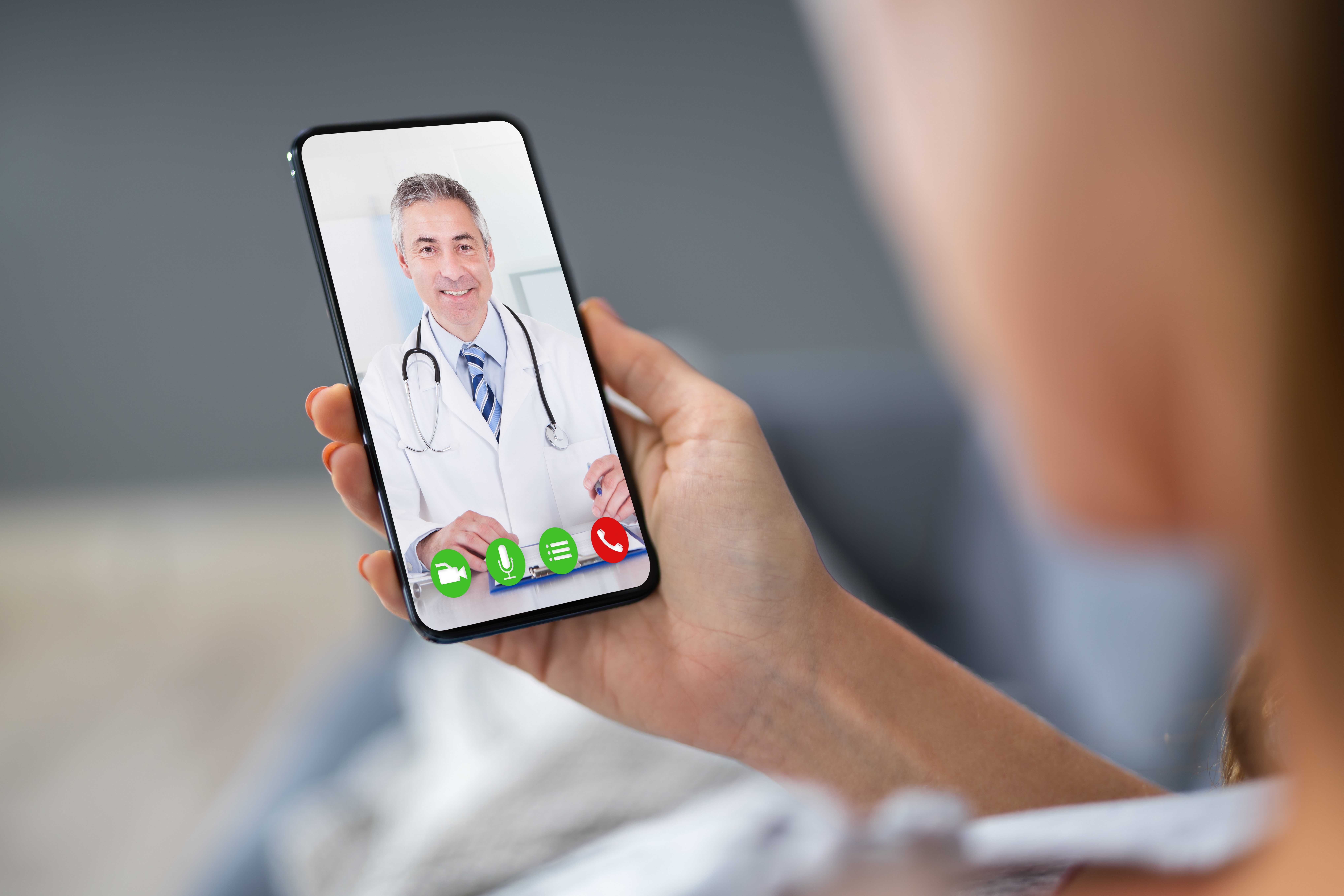
The most visible members of the healthcare team are the doctors and nurses who interact directly with patients. But there is a different, highly-specialized team that enables doctors and nurses to harness the amazing technological advancements that comprise our healthcare system today.
As a healthcare tech professional, you not only have to support equipment and systems to 99.999% reliability, you are also responsible for the connectivity that brings all the pieces together with HIPAA-compliance. At the bedside or in the ER, the care team then has the communication and information they need at their fingertips.
Delivering Better Outcomes and Patient Experience
The purpose of healthcare technology is to create a better outcome for the patient. When frontline healthcare workers have access to patient records in real-time, when a test result shows an immediately actionable condition, when the caregiver has more time to spend caring for the patient and takes less time going back and forth to the nurse’s station, technology has done its job.
It is undeniable. Technology improves the patient experience. 96% of healthcare facilities surveyed reported patient satisfaction scores improved with smartphone use. 32% of those said they improved dramatically.
Measuring Patient Experience
One of the tools for measuring patient experience is the Hospital Consumer Assessment of Healthcare Providers and Systems (HCAHPS). More than 8,000 patients nationwide complete the survey each day, and hospitals publicly report HCAHPS scores online on the Medicare website.
HCAHPS scores are important for three reasons:
- The scores impact the hospital’s reputation, which affects revenue. The listings use a 5-star rating system, and patients use these to help select a healthcare facility.Higher ratings attract more patients and revenue.
- HCAHPS scores can change the amount paid by Medicare and Medicaid. Some private insurers also use HCAHPS scores to determine reimbursement rates. The higher the rating, the greater the reimbursement, and the more benefit to the hospital’s bottom line.
- The scores are an action plan for the healthcare facility to make improvements.
Seamless Connectivity is Key to Using Healthcare Technology Effectively
Communication is critical in the healthcare environment. Today’s healthcare technology is complex and requires significant bandwidth. Providing reliable in-building communication that is always on, everywhere is easier said than done.
Three strategies typically connect people and systems:
- Wired service is reliable, but installation, moves, and changes can be costly because of the materials and labor involved. Most importantly, wired service does not provide mobile communication.
- Wi-Fi is the most common type of in-building wireless service. It is quick and easy to install, and moves are simple. However, it is a finite resource that slows under heavy use and provides a lower quality of service to devices in motion.
- Cellular provides superior performance for mobile communication and higher capacity, but gaps occur indoors because of building materials, architecture, and distance from outdoor towers.
Connectivity for Today and Tomorrow
Technology is developing so fast that any in-building mobile solution must not only support today’s needs, but it has to be expandable for coming developments. IoT, 5G, artificial intelligence, telemedicine, wearables, all of these are here or emerging, and all require reliable in-building mobile connectivity.
Distributed Antenna Systems (DAS) are the technology of choice where scalable, modular, reliable in-building mobile connectivity is critical. A DAS distributes mobile signals from the radio to antennas deployed throughout the building to cover even the hardest-to-serve corners. Think operating rooms with yards of stainless steel or shielded x-ray rooms that can stand in the way of a cellular signal.
SOLiD’s ALLIANCETM DAS edgeROUTM has the highest output power per band of any DAS remote in its class with upgrade options from four bands to six or eight with little effort. It is as easy to install as Wi-Fi while requiring very little equipment, itfits in the tightest IT closet space, and the antennas have a slim one-inch profile. ALLIANCE DAS is obsolescence-resistant because of its modularity. SOLiD’s fiber-to-the-edge solution further increases the solution’s dependability and its ability to expand as needed.
The SOLiD Solution
You already have a tremendous amount of responsibility for managing the equipment and technology you care for, and the stakes are high. Patient lives depend on it. You can delve into DAS as an unfamiliar technology and expend a tremendous amount of time and energy as you research the best decision. Or you can partner with a company that has the industry knowledge, current technology, experience, and a track record of results. SOLiD has been providing in-building DAS systems for more than 20 years. We partner with you to engineer a connectivity solution that fully covers a building or set of buildings for today and has the flexibility to grow for the future.
Healthcare will only become more connected as technology continues to develop. Bandwidth demands will expand, and the voices crying for reliable bandwidth will get louder. SOLiD can quiet the loud voices and prepare you for the future of connected healthcare. Contact your SOLiD advisor today at (888) 409-9997 or email us at info@SOLID.com.
- The Quest for Better HCAHPS Scores
- Five Ways Smartphones Can Make Hospitals Safer
- The Impact of Mobile Devices on Hospital Patient Satisfaction
Improving Patient Experience in the Digital Age

Improving Patient Experience in the Digital Age
Advancements in technology have created an era of connected healthcare, streamlining routine tasks for providers, and leaving more time for patient interaction. Innovation is continuing, and emerging technologies promise to improve the patient experience further.
Each technology advance places greater demands on communications infrastructure. Facilities seem designed to defeat mobile signals, Wi-Fi is overburdened, and public safety and privacy requirements add complexity. The continued application of new tools and the continued improvement of patient experience depends on the availability of reliable wireless communications everywhere in a healthcare facility.
What Is a Great Patient Experience?
According to Forbes, some of the highest priorities for patients are timeliness, kindness, hope, and certainty. Healthcare facilities are increasingly using new technology and wireless networks to deliver information efficiently, leaving time for the personal, compassionate healthcare that leads to exceptional patient experiences.
Improving patient experiences is a worthy goal in itself, but it can also tangibly impact hospital reputation and profitability. The Hospital Consumer Assessment of Healthcare Providers and Systems (HCAHPS) survey is a tool that measures patient experience and offers ways healthcare facilities can improve. HCAHPS scores influence patient facility choices, and better scores can mean higher reimbursements for hospitals.
Smartphone Use Improves Patient Satisfaction
The use of smartphones at the bedside - often BYOD - is a powerful and growing trend, and patient satisfaction is growing along with it. Fully 96 percent of healthcare organizations that implemented smartphones saw increases in patient experience scores, and 32 percent of those were dramatic increases. Smartphone access has resulted in some astonishing results.
But healthcare facilities are innovating far beyond smartphone use. Artificial Intelligence, 5G, wearables, telehealth, The Internet of Things (IoT) - all of these are here or on the horizon, and all rely on reliable, always-on bandwidth.
Baylor Scott and White Offers MyBSWHealth for Patient Access
Baylor, Scott and White's MyBSWHealth app enables patients to view test results, track immunizations, get information about medications, set appointments, communicate with doctors, and pay medical bills. Patients can access medical information from anywhere via the mobile app, and if authorized, can see information for family members.
Streamlined routine tasks mean more time for providers to interact with patients. And giving patients easy access to information increases engagement and creates better healthcare outcomes.
Anne Arundel Medical Group Uses Technology to Speed Diagnosis
Anne Arundel Medical Center is deploying VisualDX to make diagnoses faster and more accurate for patients. The system can help diagnose, among others, dermatological conditions, drug reactions, infectious diseases, and ophthalmic issues. It can also aid in interpreting x-rays.
Physicians access the tool from an online portal or smartphone and enter the patient's symptoms. The tool narrows down the possible diagnoses from about 3,000, offers photos, and builds graphics or "Sympticons" to assist in diagnosis. The platform integrates with the patient's electronic health records, so information about age, gender, medications, allergies, etc., is readily available.
Mayo Clinic Offers Voice to Meet Patients Where They Are
The Mayo Clinic improves patient experience with increased engagement between patients and healthcare providers. Mayo Clinic began offering voice applications in 2017 with its award-winning first aid application for Alexa devices. Voice technology enables patients to access medical information three times faster than typing.
Next is the expansion to Google Assistant-enabled devices and an Artificial-Intelligence-powered voice chatbot for diagnostics and better patient follow-up after discharge. Researchers are experimenting with diagnoses using voice clues in telemedicine programs. Mayo Clinic is investigating wearables, smart speakers, and other devices that could alert patients to problems or remind them to take medication.
Geisinger Health Reaches for Unforgettable Experiences
Geisinger Health in Pennsylvania wants to provide patients with kindness and compassion and an unforgettable experience. To that end, they launched their ProvenExperience app patient feedback application. The app is groundbreaking because a dissatisfied patient can request a refund for their part of the bill, something unheard of in healthcare.
In the first year, Geisinger paid about $500,000 in refunds – less than 0.5% of annual revenue. But as a result, direct messages to Geisinger relating to care increased 23%. The feedback led to new website design and improved ways for patients to contact doctors and access healthcare information.
Reliable, On-Demand Bandwidth is Key to Providing a Great Patient Experience
What is common to all these applications is that they require flexible, always-on bandwidth. Yet diverse architectural styles, building materials, and even the stainless steel in operating rooms can block cellular signals. SOLiD builds reliable in-building mobile systems so providers can offer information, kindness, compassion, and hope. Call at (888) 409-9997 or email us at info@SOLID.com and let us provide you with the seamless bandwidth that changes good patient experiences into great ones.
